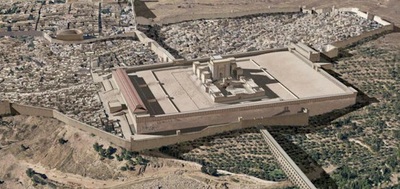Ancient Israel, a land steeped in rich history and cultural heritage, serves as a wellspring of ingenuity and innovation. The inventions that emerged from this ancient civilization not only reflect the practical needs of its people but also provide profound insights into their worldview, spirituality, and societal structures. This exploration aims to unveil a selection of significant inventions that have indelibly shaped the course of history and fostered an ongoing dialogue about human creativity and adaptability.
One cannot delve into the inventions of ancient Israel without acknowledging the profound influence of agriculture. The introduction of innovative farming techniques revolutionized the production of staple crops. Ancient Israeli cultivators mastered the art of terrace farming, a method allowing them to successfully utilize the hilly topography of the region. This technique maximized arable land while preventing soil erosion, creating a sustainable agricultural ecosystem. As a result, the ability to cultivate barley, wheat, and olives not only sustained local populations but paved the way for surplus production, heralding the emergence of trade and commerce.
A further testament to ancient Israeli ingenuity is the development of distinctive pottery. The Israelites refined ceramic techniques, rendering their pottery not merely functional but also aesthetically pleasing. The unique styles and glazes utilized in ancient Israeli pottery were not only practical for storage and cooking but also carried religious and cultural significance. For example, vessels used in ritualistic settings often featured intricate designs, illustrating the deep interconnection between daily life and spirituality in ancient Israel. Additionally, the advent of the potter’s wheel represented a significant technological milestone, enhancing the production process and leading to a wider variety of ceramic forms.
Moreover, ancient Israel is notable for its contributions to the craft of metallurgy. Artisans, skilled in the manipulation of metals like bronze and iron, produced tools and weapons that dramatically influenced both domestic life and warfare. The forging of iron tools, in particular, allowed for more efficient agriculture and construction. These innovations significantly altered agricultural practices, facilitating plowing and harvests, thus ensuring food security in a challenging environment. Additionally, metallurgical advancements underscored the importance of trade, as metal goods became valuable commodities exchanged with neighboring cultures.
Religious and cultural practices in ancient Israel also inspired notable inventions in the realm of architecture. The construction of temples, altars, and public buildings reflected both a profound reverence for spirituality and an impressive architectural acumen. The design and engineering of the First Temple in Jerusalem exemplify this achievement; incorporating intricate details and innovative solutions for structural integrity. The temple not only served as a central place of worship, but also as a civic symbol, highlighting the intersection between governance and religiosity within the society.
The ancient Israelites were also adept at innovations in text and communication. The development of the Hebrew alphabet marks a watershed moment in human history; it facilitated record-keeping, storytelling, and legal documentation. This phonetic writing system, characterized by its simplicity and ease of learning, allowed thoughts and ideas to be disseminated widely. The implications of this invention cannot be overstated, as it laid the foundation for the preservation of sacred texts, thus influencing subsequent generations and faith traditions across the globe.
In addition to linguistic advancements, ancient Israel is recognized for its innovations in systems of governance. The establishment of judicial practices and structured societal laws, including the famous Code of Hammurabi’s influence, indicates a sophisticated understanding of civic order and ethics. The Biblical texts, particularly the Torah, outline various legal frameworks that helped cultivate social cohesion. These laws addressed a myriad of issues from property rights to moral conduct, thus establishing a foundational ethos that would resonate throughout subsequent legal systems.
A critical exploration of ancient Israel inventions would be remiss without mentioning its contributions to the field of medicine. The compilation of herbal remedies and early medical practices speaks to a profound understanding of health and wellness. Ancient texts detail various treatments utilizing natural resources, emphasizing an empirical approach to healing. The intersection of spirituality and medicine in ancient Israel also deserves attention, as religious rituals and prayers were often integral to the healing process. The holistic approach to health reveals a society that valued both physical and spiritual well-being.
Lastly, it is essential to illuminate the inventive spirit of the ancient Israelites in their domestic and daily life; the creation of woven textiles is a poignant example. The art of weaving produced not just clothing but also elaborate tapestries that conveyed cultural narratives and social status. Techniques such as dyeing fabric with natural pigments showcased a combined knowledge of chemistry and artistry, leading to vibrant and durable textiles. These items were often imbued with cultural significance, becoming symbols of identity within a broader socio-political framework.
In conclusion, the inventions of ancient Israel transcend mere utility; they encapsulate a complex interplay of practical needs, cultural expressions, and spiritual aspirations. Through advancements in agriculture, pottery, metallurgy, architecture, communication, governance, and medicine, the ancient Israelites exhibited remarkable ingenuity and resilience. Their contributions fostered innovation that resonated far beyond their time, inviting us to reflect on the enduring legacy of human creativity and the transformative power of invention. As we admire these ancient innovations, they encourage contemporary societies to embrace change, adapt, and continuously seek new horizons in the unending quest for knowledge and improvement.












